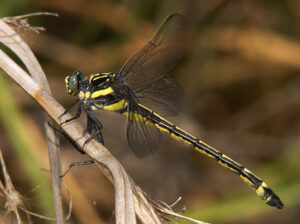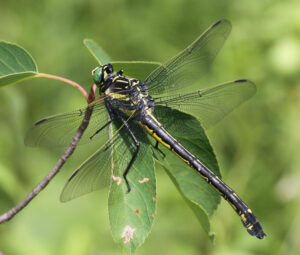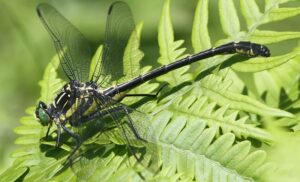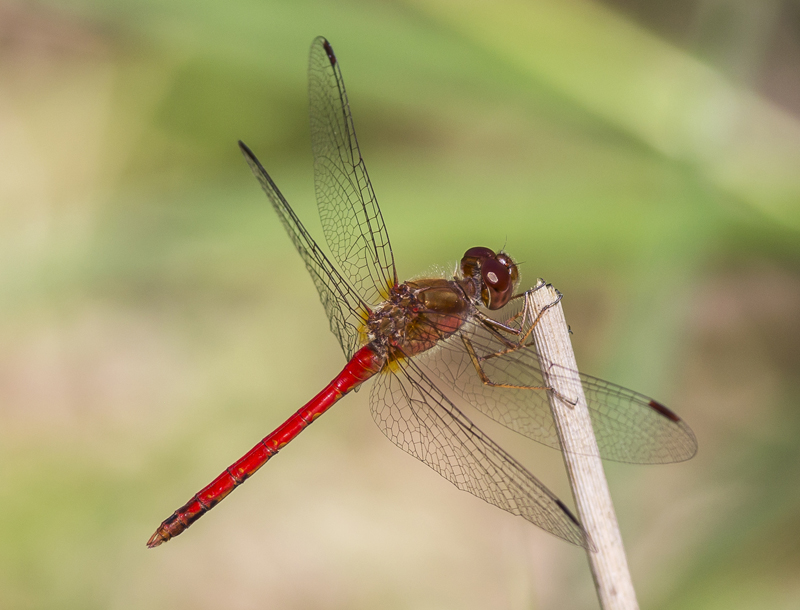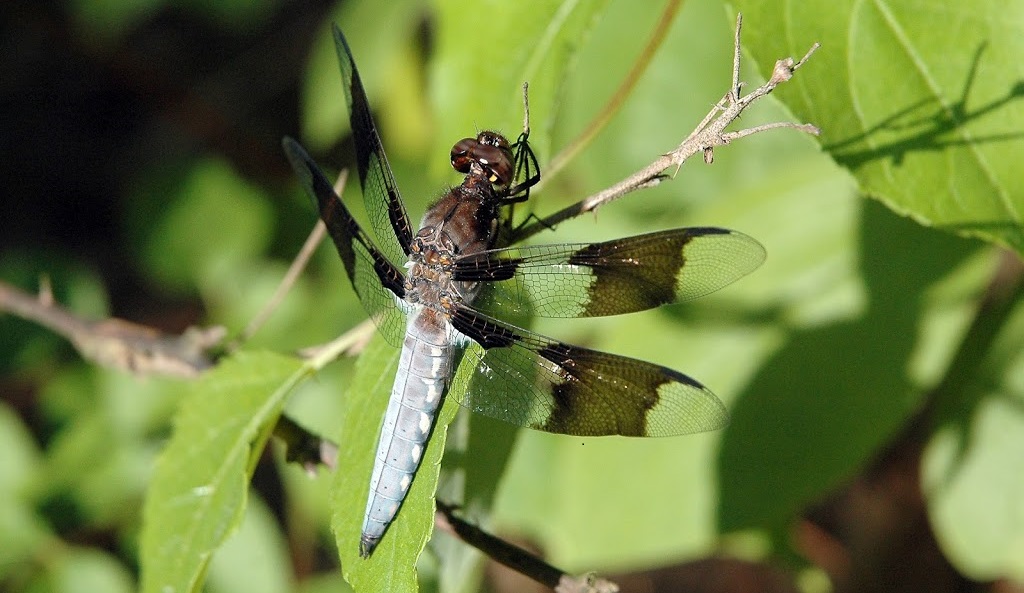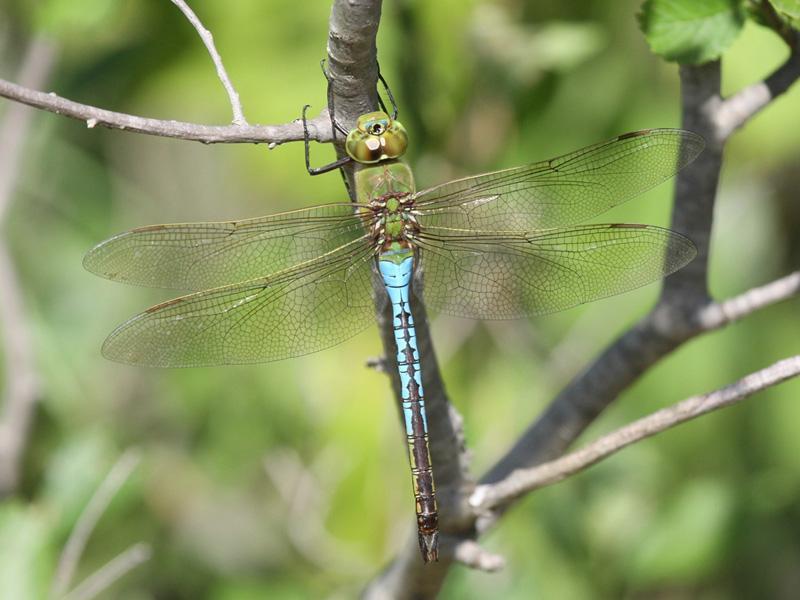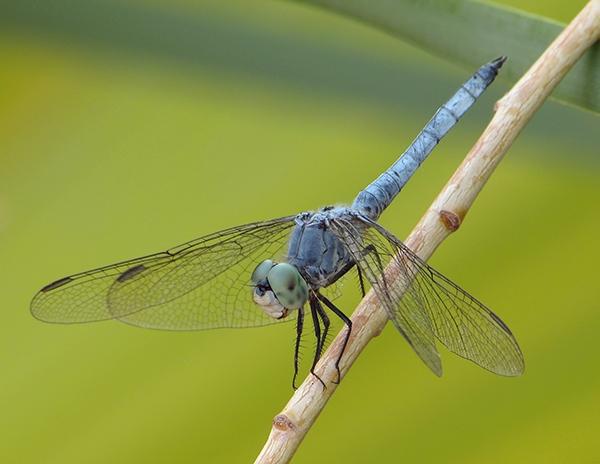Dragonhunter (Hagenius brevistylus)
Updated on
29/11/2022The dragonhunter is a very large clubtail dragonfly, the only member of the genus Hagenius. As its name suggests, the fast and formidable flier hunts dragonflies. It has a straight, deliberate flight with ample perching. The flight season of the insect is April to October.
Scientific Classification
- Class:Insecta
- Order:Odonata
- Suborder:Anisoptera
- Family:Gomphidae
- Subfamily:Hageniinae
- Genus:Hagenius
- Species:H. brevistylus
Conservation Status
Description and Identification
At 3.3 inches (84 mm), the dragonhunter is bigger than any North American clubtail. It has black and yellow markings on its body and green eyes. The head is small compared to its massive body. The males can be identified from a distance by their characteristic curling of abdomens, forming a sideways ‘J’ shape while flying.
Distribution: Eastern United States and southeastern Canada.
Habitat: Sunny river and stream edges.
Do They Bite/Sting: No.
Lifespan: 3 months.
Predators: Spiders, ants, raccoons, frogs and toads, birds, and shrews.
Behavior and Characteristics
Diet
Darner and clubtail dragonflies form its food. It sometimes ambushes its prey from above. It also eats monarch butterflies feeding on their thorax and abdomen first, avoiding the parts with the highest toxin concentrations.
Life Cycle
1. Egg Stage
The eggs are laid in late summer. They may undergo hibernation or diapause to hatch in spring.
2. Nymph Stage
The unusual-looking nymph has a very flat and wide body. It moves slowly and lives among leaf litter and bark at the edges of streams, where it remains camouflaged owing to its dark color. Once fully developed after 4-7 years, they molt into their winged adult form.
3. Adult Stage
The males are territorial, which helps showcase their ownership of suitable egg-laying sites to the females. They mate as many times as possible in summer. The species doesn’t offer parental care.
Source
greglasley.com, wiatri.net, marylandbiodiversity.com




